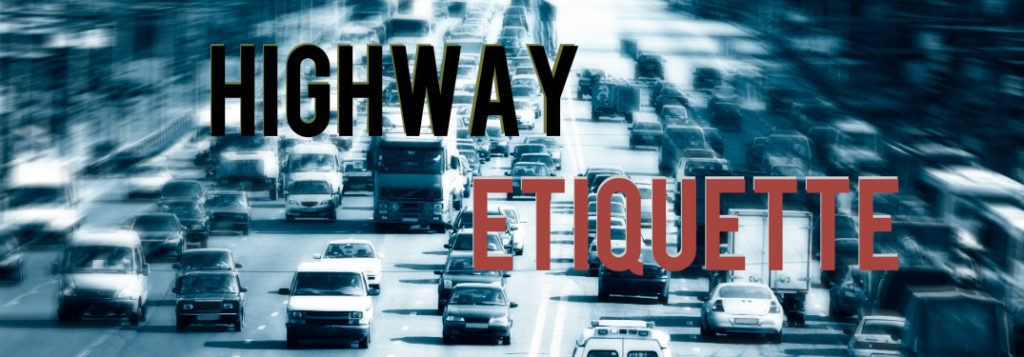
Have you ever felt as though you were the only good driver on the highway, while everyone else was either driving unsafe, driving too slow or just driving poorly overall? Despite how good you might think your driving is, chances are, many of the others on the highway at any given moment are thinking the exact same thing. Getting on the same page when it comes to highway driving etiquette can be a challenge, which is why we’re here to present 5 unwritten rules everyone needs to know before they hit the freeway.
- Get up to speed: Merging onto the highway can be a skill that is particularly difficult to master, especially for new drivers. It’s important, however, that you get your vehicle up to highway speeds as you prepare to merge into the highway lane. Not doing so doesn’t just delay your ETA at the movies. It can also force other drivers to slow down, speed up or change lanes abruptly as they try to compensate for your slower (or faster) speed, putting others at risk.
- Allow others to merge: Just as it’s important to reach the necessary speed when merging onto the highway, it’s also important to play your part when others are trying to merge onto the highway with you. If merging traffic is approaching, make an attempt to safely merge over to the next lane, leaving the other lane open for them to merge safely. Also, be prepared to slow down to allow others onto the highway if necessary and safe.
- Prepare for your exit: It’s generally expected that if a driver’s exit is approaching, they will take sufficient time to move into the far lane to leave the highway when they reach that exit. What causes problems, however, is when people drive recklessly in an attempt to pass just one more person before crossing over multiple lanes to hit the off-ramp. This may also occur if a driver isn’t paying attention or doesn’t know that their exit is approaching. Instead of putting yourself and others in danger, if you cannot join the off-ramp safely, it’s best to just accept the fact that you missed your exit and turn around as soon as you’re able.
- The left lane is the passing lane: Despite what some might think, the far left lane on the highway should be treated as the passing lane, not the lane reserved for the speedsters of the road. Naturally, faster drivers will spend more time in that left lane, but once passing is complete those drivers should move back over into the right or center lanes. It should not be treated as anyone’s personal racetrack.
- Go with the flow: Even though there is a speed limit, some cars will be going faster or slower than others. It’s simply bound to happen. That being said, it’s important for everyone’s safety that you, as one of many drivers, identify the flow of traffic and try to go along with it. Driving much slower or far faster than the natural flow of traffic only makes congestion worse. Instead, find the appropriate lane for your vehicle speed and do what you can to drive in unison with others around you.
Find more tips from the National Motorists Association here: https://www.motorists.org/blog/driving-etiquette-common-driving-errors/

